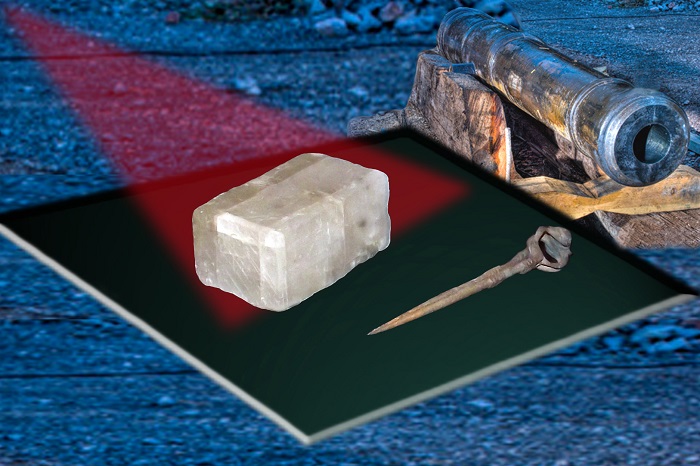
Divers recently found the rhombohedral crystal amongst the wreckage of the Alderney, an Elizabethan ship that sank near the Channel Islands in 1592. The stone was next to a pair of navigation dividers, suggesting it may have been kept with the ship's other navigational tools, according to the research team headed by scientists at the University of Rennes.
A chemical analysis confirmed that the stone was Icelandic Spar, or calcite crystal, believed to be the Vikings' mineral of choice for their fabled sunstones, mentioned in the 13th century Viking saga of Saint Olaf.
Researchers have said that sunstones could have been held up toward the center of the sky, allowing sunlight to hit it and get polarized and broken into an "ordinary" and an "extraordinary" beam. Seafarers would have rotated the crystal on a clear day until the pair of beams lined up. By noting where the sun was when this happened, navigators could make a reference point to use even when the sun was obscured by clouds or twilight.
European seafarers had not fully honed magnetic compasses for navigation until the end of 16th century. The researchers say the crystal might have been used on board the Elizabethan ship to help correct for errors with a magnetic compass.
"In particular, at twilight when the sun is no longer observable being below the horizon, and the stars still not observable, this optical device could provide the mariners with an absolute reference in such situation," the researchers wrote.
No such crystals have been found yet at Viking sites. The team notes that archaeologists are unlikely to find complete crystals as part of a group of grave goods, since the Vikings often cremated their dead.
But recent excavations turned up the first calcite fragment at a Viking settlement, "proving some people in the Viking Age were employing Iceland spar crystals," the researchers wrote.
The study was detailed online this week in the journal Proceedings of the Royal Society A.



Reader Comments
to our Newsletter